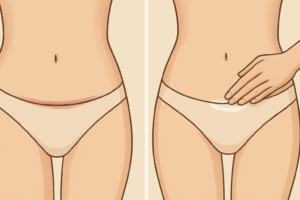Breast cancer is one of the diseases that women worry about. One of the most important factors for successful treatment is early diagnosis. Regular monthly breast examinations, either on our own or with the help of a doctor, enable early cancer detection and the necessary treatment. Statistics show that one in eight women will develop breast cancer at least once in their lifetime. Fortunately, it is possible to reduce the risk of breast cancer with simple solutions before it is too late.
What is breast cancer?
Breast cancer is cancer that develops from cells in the breast tissue. It can originate anywhere in the breast tissue. It is caused by uncontrolled proliferation of cells in the milk glands and cells lining the ducts that carry milk to the nipple.
Belirtiler
Meme kanserinin en büyük sinyali; memede ele kitle gelmesi. Kanserli kitleler, diğer şişliklerden sert yapılı, düzensiz kenarlı ve pürtüklü yüzeyi ile ayırt edilebiliyor. Bunun dışında;
- Peeling and crusting of the nipple skin,
- Bloody discharge from one breast or one duct,
- Inward retraction, collapse or deformity of the nipples,
- Sudden rashes and sores on the breast skin
.
Factors that increase the risk of breast cancer
Age
Although breast cancer can be seen at any age, it is mostly seen at the age of 50 and above. It is less common in women 35 years of age and younger. The incidence of breast cancer in American women between 2000 and 2004 was 25 per 100,000 in the 30-34 age group, rising to 190 per 100,000 in the 45-49 age group and 455 per 100,000 in the 70-74 age group. Hereditary breast cancer or breast cancers caused by genetic disorders are more common in younger women.
Family History
A history of breast cancer in a first-degree relative (mother, aunt, grandmother, daughter), especially on the maternal side, is considered an important risk factor. The risk increases even more if these relatives develop the disease before menopause and/or have bilateral breast cancer.
Ojen Hormone
The earlier a woman has her first period (e.g. before age 12) and the later she reaches menopause (e.g. age 55), the higher her risk of developing breast cancer. Taking birth control pills is also thought to increase the risk of breast cancer, although at a very low rate.
Hormone Therapy After Menopause
Estrogen and medroxyprogesterone prescribed by gynecologists and obstetricians for long term (5 years or more) to prevent problems such as hot flashes during menopause
asetat içeren kombine hormon ilaçları, meme kanseri riskini sadece östrojen içeren hormon ilaçlarına kıyasla daha çok artırıyor.
Breast Cancer History
If a woman has already developed cancer in one breast, the risk of developing cancer in the other breast in the future increases approximately 2-fold. In addition, the incidence of breast cancer increases in women who underwent breast irradiation for other cancers (lymphoma, etc.) in childhood.
Nutrition and Environmental Factors
A diet rich in fat and weight gain increase the risk of breast cancer, especially in menopausal women. Alcohol consumption (more than one glass a day) also increases the risk, while the effect of smoking is still debated. Regular exercise and physical activity are known to reduce the risk of breast cancer.
The importance of early diagnosis in breast cancer
The earlier breast cancer is diagnosed, the easier it is to treat and the higher the chances of recovery. If breast cancer is detected early, before it spreads, it is possible to achieve highly satisfactory results in treatment. Even if you have a mammogram every 3 years, you should still make sure you know how your breasts normally look and feel. Breast recognition simply means knowing how your breasts normally look and feel at different times of the month. If you notice a change that is not normal for you, you should not brush it off and should consult a doctor.
Who Should Be Tested for Hereditary Breast Cancer Risk?
- Those with a family history of breast or ovarian cancer in at least two or more women before the age of 50.
- First, second or third degree relatives with breast cancer before the age of 50 or ovarian cancer at any age.
- Those with first- or second-degree relatives with breast and ovarian cancer.
- First-degree relatives with bilateral breast cancer.
- A male relative has breast cancer.
- People belonging to ethnic groups at risk for breast cancer.
























